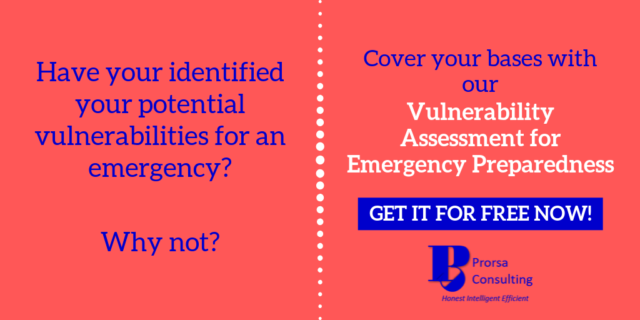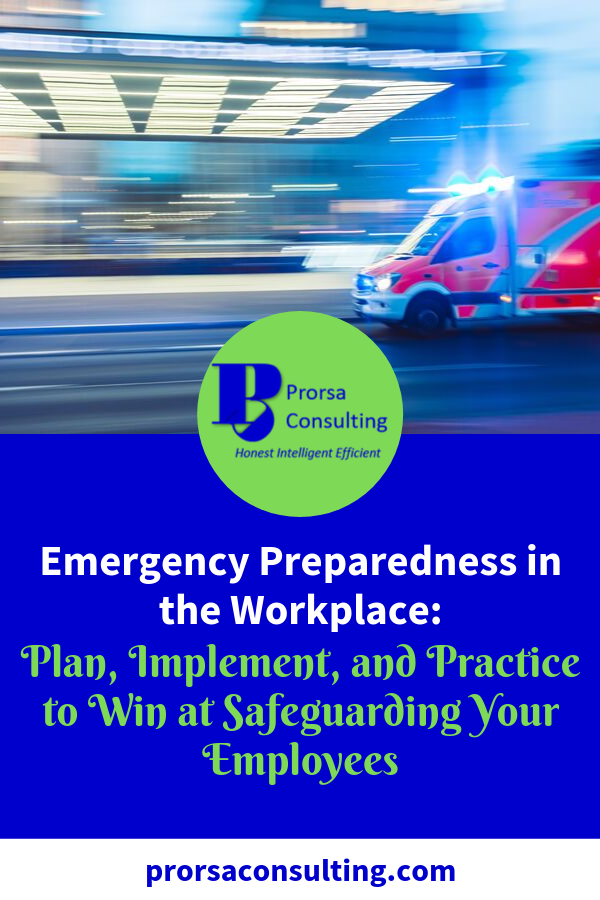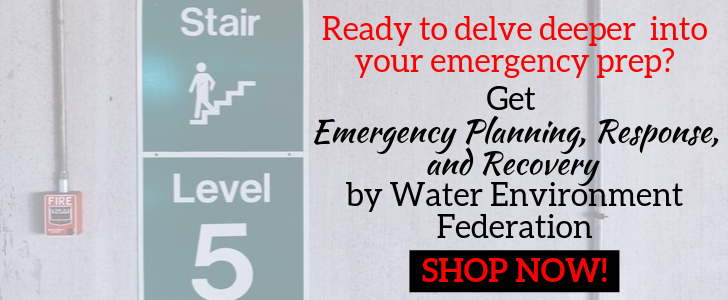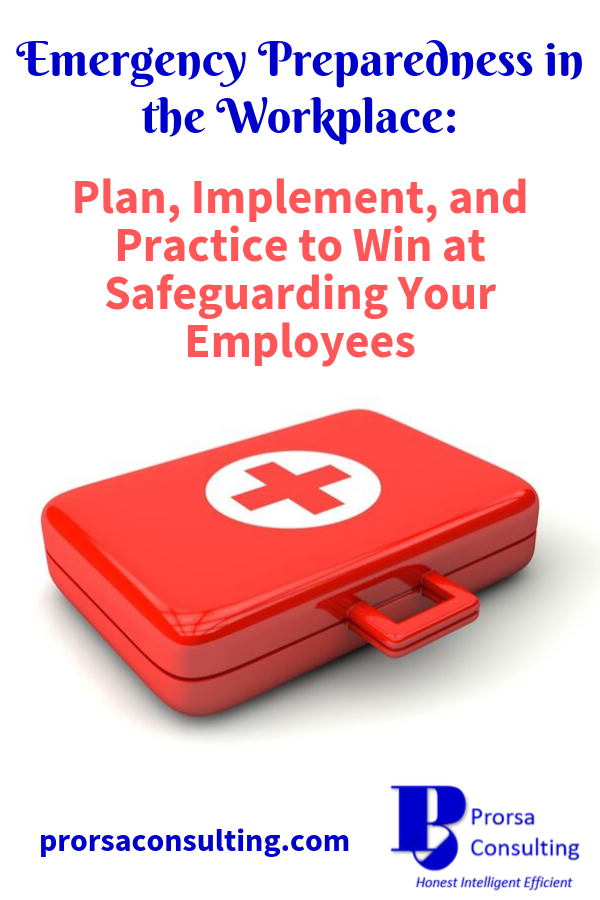Emergency Preparedness in the Workplace: Plan, Implement, and Practice to Win at Safeguarding Your Employees
By : Admin -
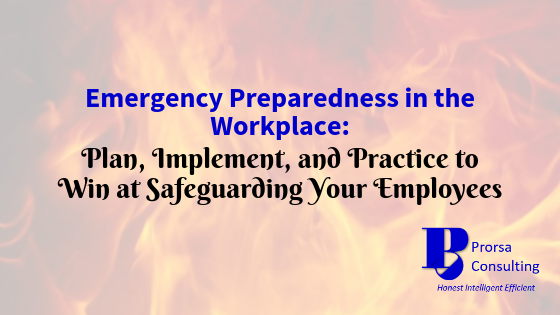
Your safety management program exists for employee protection, and it must include information on emergency preparedness in the workplace in order to be effective.
What is emergency preparedness in the workplace?
The Federal Emergency Management Agency (FEMA) within the Department of Homeland Security (DHS) defines preparedness as “a continuous cycle of planning, organizing, training, equipping, exercising, evaluating, and taking corrective action in an effort to ensure effective coordination during incident response.”
Applying this cycle on the job forms the basis of workplace emergency preparedness.
As preparedness exists as a systematic process and is unique to each operation, employers cannot automatically assume workers have the proper knowledge and/or experience to respond appropriately in a catastrophe.
Being prepared for unexpected crises benefits individuals while at work and in their personal lives.
Moreover, solid preparations for disasters entail working for improvement on an ongoing, continual basis.
Keep reading below and uncover the steps to plan, implement, and practice to ensure your emergency preparations on the job remain robust to protect workers.
Please be aware this blog post may contain affiliate links and any purchases made through such links will result in a small commission for Prorsa Consulting (at no extra cost to you). Feel free to visit our Disclosure of Material Connection page for more information.
Emergency Preparedness in the Workplace: Planning
According to the National Safety Council’s Injury Facts, 592 deaths and 4,270 injuries resulted from the weather during 2017.
That’s just from the weather!
Not effectively planning for disasters increases the potential for death and serious injuries.
Additionally, the planning phase for workplace emergency preparedness can greatly benefit from a methodical, efficient approach like the one presented below.
Identify and Assemble an Internal Team.
Preparing for disasters should not be an individual sport.
Input and feedback from others only enrich the planning process.
When thinking about putting together an internal team to spearhead the effort, the composition of the group can make or break results.
So, you should endeavor to gather individuals from different professional backgrounds and organizational functions.
Who Would Make Good Participants for the Internal Team?
Target internal experts like safety professionals, emergency management personnel, and human resources staff first to join the team.
These individuals can provide the technical knowledge needed to support your emergency preparedness project.
Additionally, a management representative(s) must have a place in the group.
With management having a seat at the table, you help to promote buy-in at the top levels of the organization.
This role should also provide feedback to ensure alignment with the organization’s current vision, culture, and business goals.
Furthermore, an employee representative(s) would bring valuable insight into workplace emergency preparedness program development.
These representatives can contribute their knowledge of how current work areas and tasks may be impacted by emergencies.
They also give other employees a voice in the process, which can assist with broader buy-in with the workforce during the implementation and practice stages.
We will discuss these stages in greater detail in later sections.
Expectations for the Internal Team?
Once the team has been assembled, the group should work to determine its expectations for the process.
At a minimum, the internal workgroup should pursue the following goals:
- Determine emergency risks for the facility
- Create and implement a plan to handle emergencies, keeping in mind the feasibility for operations
- Assist in leading the program rollout, including communication and training
Assess Emergency Risks through Vulnerability Assessment.
So, what is a vulnerability assessment? This type of evaluation helps to identify what emergencies could happen at a given location.
More often than not, each potential emergency event receives a risk ranking during the evaluation to help users prioritize the identified dangers.
The internal team should perform the vulnerability assessment in a manner that encourages proper feedback from the different perspectives represented.
For each potential emergency, the risk should be ranked on its likelihood to occur and its potential severity.
The workgroup would probably find an assessment template beneficial to help guide the evaluation.
As the assessment concludes, the high-risk nature of certain vulnerabilities should become evident.
Make note of these high-risk vulnerabilities, as we will come back to them in a future section.
Interface with Emergency Services, Contractors, and Vendors.
When looking at a location’s vulnerabilities, the internal group may find the need for assistance from external personnel to properly respond to potential emergencies.
For instance, fire, medical, rescue, and large chemical release emergencies often necessitate intervention from fire departments, emergency medical services, police, hazardous materials responders, and/or utilities.
In addition, determining proper courses of action to address certain emergency vulnerabilities on the job may need expertise, resources, or other support that can only be obtained externally.
Trade/industry associations, consultants, other EHS professionals in the industry, compliance assistance programs, etc. can help provide necessary additional elements to make the workplace emergency preparedness endeavor a success.
Utilize the group to identify which external services may be needed to make the preparation for a crisis efficient, effective, and value-added for the organization.
Then, plan time to contact any external services/personnel ascertained as a need.
Be sure to include accommodations in the planning for resources to secure contracts for external services, if necessary.
Create a Written Emergency Action Plan.
How is the location going to control its risks from the identified vulnerabilities?
A written emergency action plan offers the roadmap to accomplish this.
Moreover, it should be crafted as a site-specific, comprehensive strategy with enough granular detail to support adequate worker, contractor, and visitor training while ensuring overall compliance for the location.
While the plan will need to cover all high-risk vulnerabilities identified by assessment, some universal vulnerabilities should get addressed within the document:
- Fire
- Severe Weather (Thunderstorms, Tornadoes, Lightening)
- Emergency Medical & Rescues (regardless of cause)
- Workplace Violence
- Bomb/Terrorism Threats
Evacuation, shelter in place, and all clear/safe to return procedures also form fundamental parts of any scheme for emergency preparedness in the workplace and must be incorporated.
Subsequently, the emergency action plan ought to outline processes for communication/notifications (including alarms), accounting for persons, and equipment shutdowns during urgent situations.
What Resources and Other Information Should You Consider for the Emergency Action Plan?
The Occupational Safety and Health Administration (OSHA) Evacuation Plans and Procedures eTool hosts an Emergency Action Plan page and Emergency Action Plan Checklist to assist regulated entities in complying with requirements.
Furthermore, the Centers for Disease Control and Prevention (CDC) offers an Emergency Action Plan Template to help guide authoring efforts.
Since this written document outlines the manner in which the location will handle itself in a crisis, it is imperative the internal team crafts a feasible plan aligned with overall business needs.
Inputs and feedback from the workgroup should reflect such.
Additionally, external entities should also provide information and comment on the emergency action plan with regards to their responsibilities within the document.
The internal team should work to address worker accessibility and periodic updates to the document and seek final management approval of the plan before moving into the implementation phase of workplace emergency preparedness.

Credit: Image by Paolo Ghedini on Pixabay.com.
Emergency Preparedness in the Workplace: Implementation
Planning to be prepared for a workplace crisis gets you on the right path to mitigate emergencies.
However, a strategy without implementation defeats the whole purpose.
According to the OSHA Education Center, businesses impacted by disasters have a 40% chance of never reopening their doors.
Having a robust, implemented emergency action plan helps to safeguard lives and reduce the potential for long-term business impacts.
Make Sure Needed Physical Elements Are in Place.
Successful implementation of an emergency preparedness program will rely on various tangible items throughout the location in order to make risk mitigation possible.
Signage is one such item.
Emergency exits and severe weather shelters should be clearly marked in order to make them effective.
In addition, signage for first aid supplies, roof access points, maintenance closets, electrical closets, etc. can prove extremely handy during a response to a disaster.
Next, communication/notification systems must be installed and working properly.
This would include any telephone systems, alarms, intercoms, or handheld two-way radios expected to be utilized during a catastrophe.
Moreover, any supplies or other equipment used during a crisis would also require review to ensure readiness.
Fire extinguishers and fire suppression systems, any first aid equipment, etc. need assessment for functionality.
You will also want to confirm you have enough equipment and supplies to meet the site’s needs and may want to assess the ease of mobility, specifically with first aid supplies.
Finally, make certain employees have access to areas utilized in a workplace emergency.
Severe weather shelters cannot serve their purpose if the spaces must remain locked in the course of normal business.
Exit and evacuation routes lose value if obstructions prevent safe egress.
Evacuation meeting points won’t be helpful if workers cannot quickly and safely walk to them.
Any deficiencies found in the physical elements of the emergency action plan must receive attention quickly to promote the best emergency preparedness.
Address Employee Training for Emergency Preparedness.
Workers won’t know the specifics of the location’s emergency action plan until they receive training.
The training for workplace emergency preparedness must have a strong initial rollout consisting of detailed instruction to promote future positive program results.
The sessions should cover all the procedural aspects outlined in the emergency action plan.
Moreover, be sure to include the location of the plan with instructions on how employees can access it for future reference.
Workers should also know who to contact with questions concerning the emergency action plan or any of the procedures within it.
Don’t forget to integrate any specialized training (i.e. first aid/CPR, fire extinguisher use, and/or spill response) for individuals with additional responsibilities under the plan.
Support documents can help employees assimilate the emergency action plan requirements and should be presented during training.
We will come back to support documents in a few minutes.
Workers should receive training on emergency preparedness upon hire, during annual safety training refreshers, and whenever changes are made to the emergency action plan.
Provide Emergency Preparedness Awareness Information to Contractors, Visitors, and Vendors.
Urgent situations can happen at any time regardless of who may be present on site.
As such, external individuals should have awareness of the emergency procedures established for locations where they may work, make deliveries, or visit.
Safety orientations serve as excellent ways to provide emergency preparedness awareness to persons not employed by your organization.
As with employees, orientations should take place initially, annually, and when the emergency action plan changes.
Moreover, visitors, contractors, and vendors will benefit from having reference documents covering the emergency action plan, as well.
Emergency Preparedness in the Workplace: Practice
As with Most Things in Life, Practice Makes Perfect.
Repetition provides the chance to execute a task successfully when it really counts.
In 2015, FEMA released information from a survey indicating almost 60% of adults in the U.S. had not practiced for a disaster during the past year.
Organizations owe it to employees and themselves to provide exposure to crisis situations, even if it is just practice.
Rehearsing will increase the change of emergency tasks being done correctly the first time in a real catastrophe.
Moreover, practicing naturally tests the emergency preparedness program.
As such, it provides the perfect opportunity to assess and make enhancements for continual improvement.
What Strategies Can Be Used for Practice?
Most commonly, businesses use tabletop exercises and drills to practice emergency preparedness in the workplace.
Tabletop exercises consist of disaster scenarios presented in a group setting.
The group would then figure out how to address the scenario as per the emergency action plan.
These can be effective when initially learning elements within the plan.
They can also give individuals a heightened awareness of workplace emergency preparedness.
Yet, these exercises can lack a real-world practice feel.
On the other hand, drills simulate disaster conditions and mandate individuals respond as if an actual emergency exists.
They have the added benefit over tabletop sessions in that emergency services may be willing to participate in scheduled drills.
These mock situations also can provide close to actual performance data.
The site then can utilize the data to enrich the location’s preparedness status for the future.
Notwithstanding the method of practice, complete exercises of these types on a schedule suiting the needs of your organization.
One practice of all parts of the emergency action plan each year serves as a good rule of thumb.
Of course, multiple practice sessions can be scheduled throughout the year to cover distinct parts of the plan.
Additionally, should an actual emergency occur at the facility, the response to that crisis should count toward the site’s practice total for the year.

Credit: Image by Levi Damasceno on Pexels.com.
Make Time to Assess Your Practices.
Evaluating emergency preparedness practice sessions can garner excellent information upon which value-added enhancements can occur.
When possible, strive for quantitative measures over qualitative ones.
Such items may include evacuation time, the amount of time taken to get everyone to a severe weather shelter, or the percentage of employees checked in at meeting points.
Furthermore, quantitative metrics offer the ability to assign overall performance scores based on the data tracked.
The assessment process must also include notations of failures.
Things like people ignoring alarms, equipment malfunctions, communication confusion, and inaccessible emergency areas would put lives at risk in a real disaster.
Breakdowns in execution should form the foundation for the improvement actions we will discuss in more detail momentarily.
Finally, seek feedback from participating employees & external entities on the practice experience.
You can accomplish this by polling a small group of participants in the tabletop exercise, drill, or emergency.
Ask questions like:
- How did he/she feel emergency action execution went generally?
- Were there any inconsistencies between the emergency action plan procedures and how the practice was executed?
- What items should be identified for improvement in the future?
Improve for Greater Performance.
Once the facility’s emergency action plan has received some practice, the time will have come to reassemble the internal team.
The team’s purpose . . . to review results and formulate changes to present to management.
This particular task goes to the core of continual improvement for workplace emergency preparedness.
During this time, the internal workgroup may need to revisit the vulnerability assessment.
This would be crucial if a real crisis occurred but failed to be identified during the evaluation.
In this case, the emergency action plan may not include the given vulnerability.
In addition, pay special attention to any failures noted during practice.
These may point to additional procedures, plan modifications, or training issues needing attention to enhance performance.
Once the internal group has outlined suggestions for updates, present all the analysis data along with the team’s recommendations for management review and approval.
After the recommendations have received sign-off from management, update the plan and get final document approval.
Follow-up by making the necessary physical changes.
Then retrain/recommunicate the updated emergency action plan to all affected individuals.
Last but not least, continue with the practice, assessment, and improvement cycle for ongoing enhancement of the workplace emergency preparedness program over time.
Emergency Preparedness in the Workplace: Bonus Tips
Expand Your Facility’s Preparedness.
An emergency action plan usually deals with the immediate protection of persons and property during an emergency.
So, how do you deal with the longer-term aftermath when catastrophes strike?
Items like document recovery, continuing operations, security, and major property damage recovery can and should be addressed in a business continuity plan.
Reference Pertinent Existing Procedures and Policies in the Emergency Action Plan.
Creating a written emergency action plan does not have to start with a blank sheet of paper.
The site’s existing safety management program probably already contains various procedural elements for integration or reference in an emergency action plan.
These may consist of the following:
- Incident Reporting and After Care Procedures
- Public Relations/Media Communications Policies
- Fire Prevention
- First Aid
- Confined Spaces
- Spill Prevention Control and Countermeasures Plan
Support/Reference Documents Can Help Bolster Worker Awareness.
In a crisis, emotions can get frayed and training on emergency preparedness in the workplace can easily be forgotten.
Keeping information on emergency action in front of employees provides a mechanism to prevent this from happening.
Seeing the data on a more frequent basis helps to solidify the learning process, helping to etch proper practices within the minds of workers.
References like one-page work instructions, emergency phone number cards, evacuation maps, emergency action plan pocket booklets, and notification trees provide tangible items workers can take with them and consult outside of training.
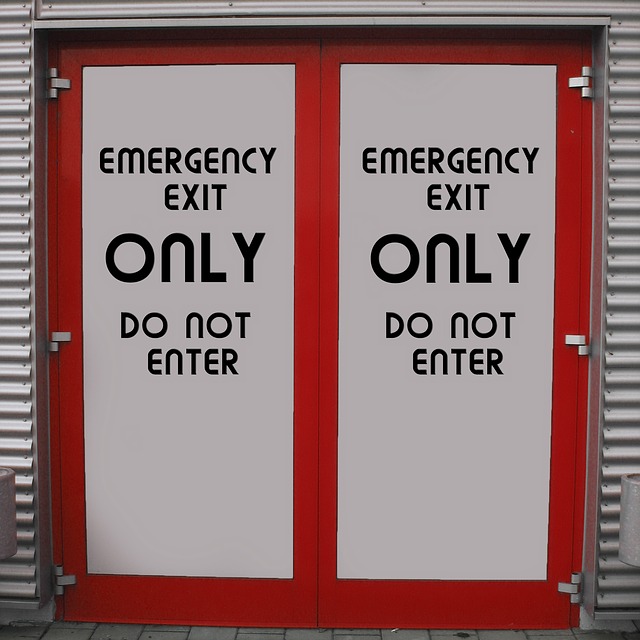
Credit: Image by Gerd Altman on Pixabay.com.
Designate Area Captains to Help with Emergency Action Plan Execution.
Remember . . . successful emergency preparedness is a group effort.
However, persons will want the support of a leader when the worst happens.
Area captains help to fulfill this leadership role during a crisis.
These individuals should be identified with their physical area of responsibility and functional duties in the emergency action plan.
Tasks like being responsible for headcounts in an evacuation, bringing along first aid supplies, and serving as the point of communication for the group could all fall under the area captains’ duties.
Reinforce Emergency Preparedness at Home with Employees.
Individuals face the threat of a possible disaster both at work and at home.
Giving workers information to keep themselves safe in all situations will only serve to move your safety management program from good to great.
So, don’t neglect to engage workers concerning emergency preparedness at home during training.
In many instances, the information your present will align no matter where the crisis occurs.
For example, in large a fire, you evacuate to your designated meeting place and call 9-1-1 regardless of location.
As such, integrating a little at-home safety will cost you little additional time, but the payback could potentially be priceless.
Other Emergency Preparedness Articles You May Like
Take Workplace Violence Out of the Mainstream
Stop and Challenge Workers to Eat, Breathe, Live Home Safety Every Day – Part 1
Give Emergency Exit Routes the Focused Attention They Are Due
Firm Up COVID-19 Workplace Best Practices for Continued Safe Operation
Final Thoughts
You must plan, implement, and practice emergency preparedness in the workplace for maximum effectiveness.
Moreover, it must contain a continuous improvement component to truly safeguard workers.
This does not mean it has to overwhelm or complicate a site.
Work with teams of internal and external personnel to find and utilize resources and references to develop the emergency preparedness program.
Also, make sure to confer with management from the beginning for the best outcome.
We encourage your feedback on this blog. Be sure to like and/or share below if you enjoyed the content. You can also provide us with feedback via our Contact Us page.
Don’t forget to follow Prorsa Consulting on LinkedIn, Pinterest, and Twitter.
Feel free to email contact@prorsaconsulting.com with any questions you may have.
How would you like to have access to additional, exclusive EHS updates & info from Prorsa Consulting? Just signup for the Prorsa Consulting Newsletter below. You’ll get access to our Free Resources area and all the tools, templates, and presentations in the library. Get your free subscription today!
Emergency Preparedness in the Workplace: Plan, Implement, and Practice to Win at Safeguarding Your Employees.


